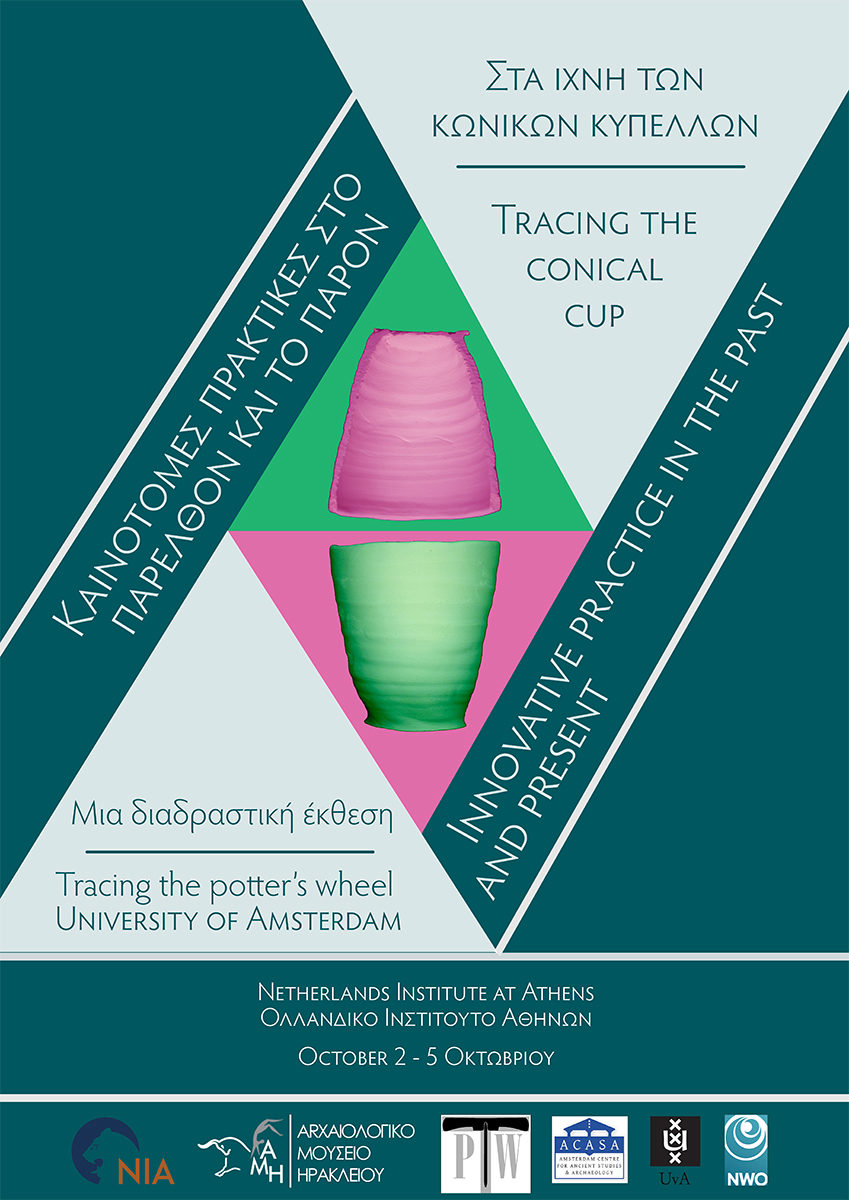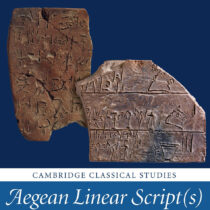On October 2-5, 2019 the Netherlands Institute at Athens will present the exhibition Tracing the Conical Cup. On Wednesday, October 2, the NIA will host the Opening Lecture by Dr Jill Hilditch (University of Amsterdam).
Lecture by Dr Jill Hilditch
This lecture marks the opening of the interactive exhibition Tracing the Conical Cup, a visual exploration of the innovative ways we can look at these objects to shed light on the innovative practices of the Minoans, and communities of the wider Aegean. In this exhibition, you will find three ways of looking at cups: ceramic analysis, forming techniques, and 3D visualization.
People have been making the humble cup for thousands of years, whittling them from wood or bone, casting them in metal, or shaping them from clay. What is exciting for archaeologists is that plastic cups of today have a strong connection with ceramic cups in prehistory.
The conical cup is a small, handleless and usually undecorated cup, which can teach us about the lives of the Minoans of Crete, as well as other regional communities of the Aegean during the Bronze Age. Despite their plain, featureless design, these little cups appear at archaeological sites far from the Cretan palaces, throughout the other islands of the Aegean and
the western coast of Anatolia. What made these cups so popular? And how can archaeologists begin to answer such questions?
The exhibition
This exhibition focuses on a single, plain, handleless cup to showcase the range of technologies archaeologists use to investigate people of the past and their material culture.
The conical cup is an unremarkable shape to see in a museum collection, but can be found at Bronze Age sites on Crete and throughout the southern Aegean in their thousands. Their sheer quantity and often rough quality, from a production perspective, suggests they were used in a similar fashion to the plastic disposable cups of modern life. We are still unsure what liquids these small drinking cups would have held though current ideas suggest wine, a likely drink for large feasts and social gatherings.
The widespread appearance of this cup in the Bronze Age Aegean raises important questions for archaeologists, such as what were these cups made from, and were they made locally, or exchanged across extensive sea-based networks? Looking into their ceramic fabric to see how humans transformed their raw materials allows the movement of these cups to be traced over time.
Looking at production traces provides a window onto the techniques and tools of the potters making these cups, including the use of technologies such as the potter’s wheel. Understanding how such technologies used and spread can help us to understand the ways humans interacted with each other in the past.
The way we see and understand ancient objects and technologies is changing all the time, as archaeologists bring new cutting edge technologies and tools into their studies. 3D scanning and printing allows new ways for everyone to visualise and experience our past.
Exhibition opening hrs: 10.00-13.00 & 15.00-18.00
For more information about this exhibition and the work that Tracing the
Potter’s Wheel (TPW) does, visit us at: http://tracingthewheel.eu/exhibition2019





